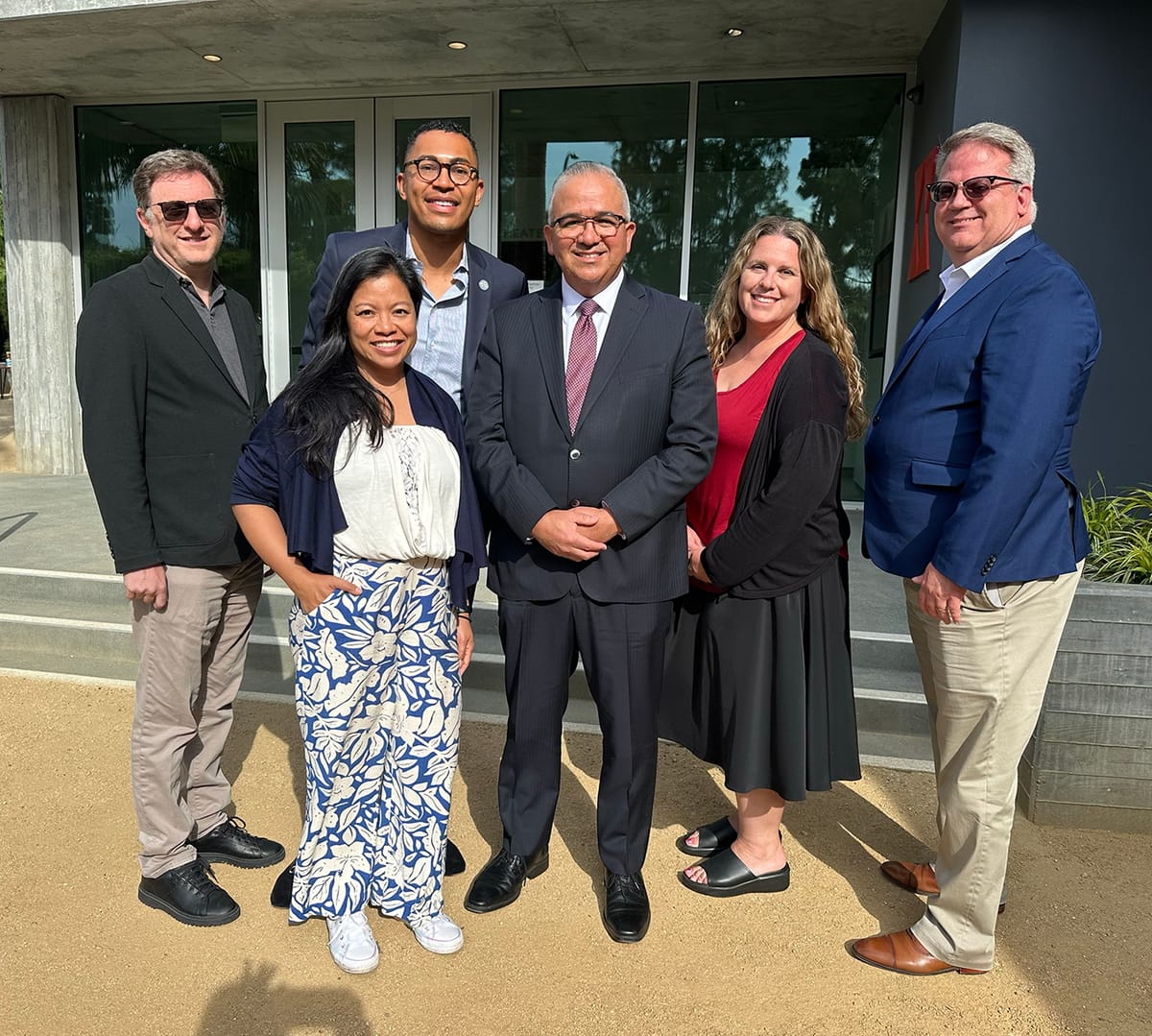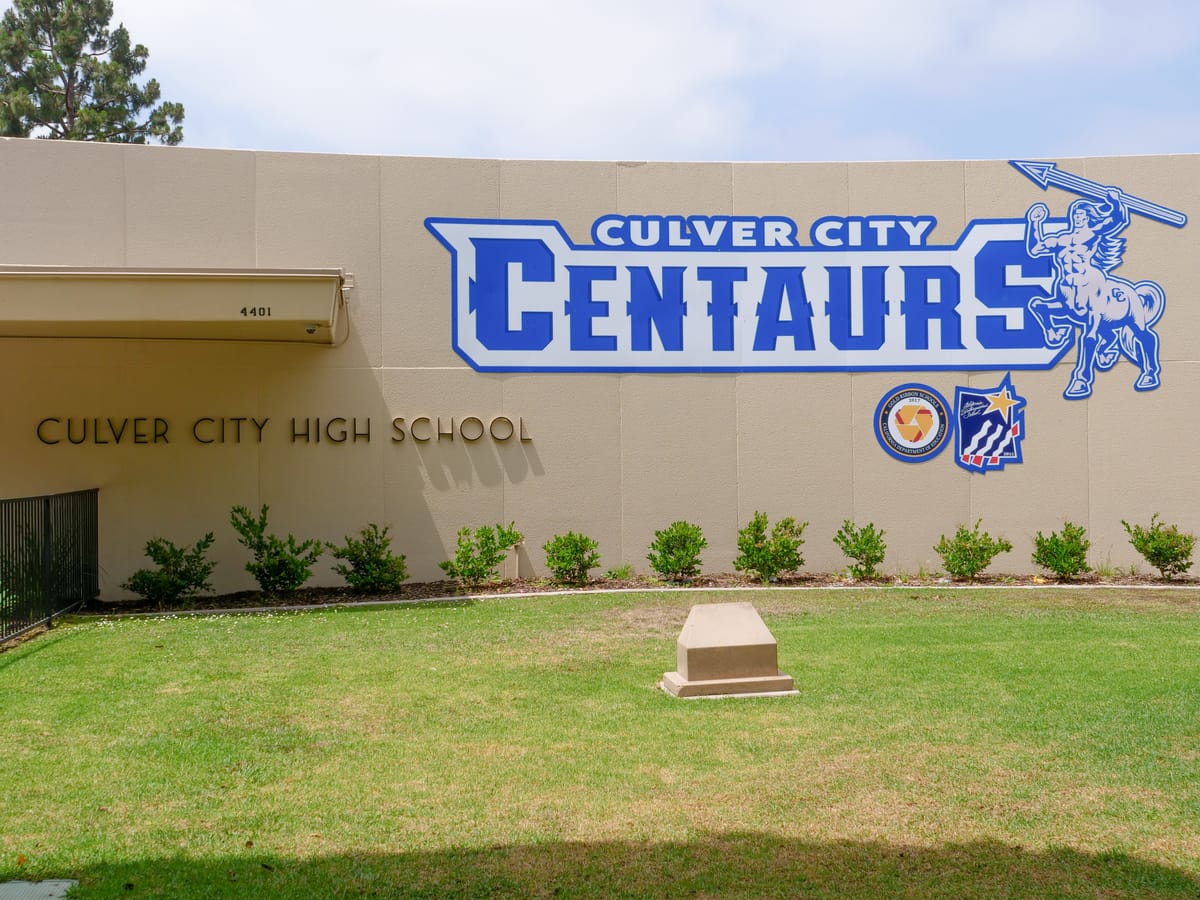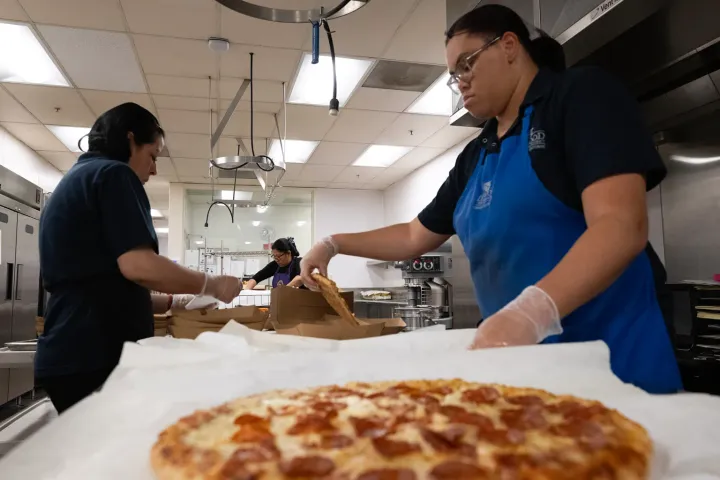CCUSD agrees to City terms for $2.5 million contribution
As part of the "partnership guidance" agreement connected to the donation, the District will be obligated to place a parcel tax measure on a ballot in 2026 should a citizen's initiative not pass.

An agreement was officially struck last Tuesday, October 28, between the City of Culver City and the Culver City Unified School District (CCUSD), under which the City will donate $2.5 million to the District. With this "partnership guidance" agreement finalized, the City is expected to transfer money to CCUSD within the next several weeks.
CCUSD's ability to balance its own budget without city assistance was a significant concern of city staff and Culver City council members when deciding to respond to the District's plea for financial assistance. As a result, the City has included a series of obligations for the District as a condition of the donation, which will support efforts to address a significant operational deficit projected for this fiscal year.

Built within the agreement is an exit clause that allows the City to terminate the deal if CCUSD does not meet the obligations set out in the agreement. Among these is a commitment to have a parcel tax measure on the ballot in 2026 to help balance the District's budget.
Parcel taxes are the primary method that school districts can use to raise capital. Culver City already has an $189 parcel tax enacted by voters through Measure K, which raised just under $2.4 million for the District in the 2024-25 fiscal year.
Additionally, a 2022 study commissioned by the previous Board of Education and conducted by Rivercrest Partners (formerly Brookwood Partners) outlined several scenarios that could add 35 to 120 units on District-owned property as another option to generate revenue. Exploration of these potential projects and the idea of housing on District property is another condition included in the agreement.
However, the report itself and the concept of developing housing have not been well received by the public, having drawn criticism across board meetings since the idea was initially introduced. Some have even linked what they classify as excessive and unnecessary spending on this report and the District's dealings with education service provider New Earth as significant contributing factors to current budget issues.
Among the primary drivers of the deficit is a drop in attendance at Culver City schools. The Average Daily Attendance (ADA) at schools determines how much money California school districts receive from the state, and this number has declined in Culver City over the past several school years.
The decline has contributed to a decrease in state funding, exacerbating financial challenges further amid inflation. CCUSD received a less than $102 million allocation from the state, more than $4 million less than the over $106 million the state gave CCUSD for the 2023-2024 school year, and several Board of Education members lamented this fact at the Oct. 14 board meeting, where the final agreement was first presented to the Board.
"The state of California does not value public education as much as it should," CCUSD Board of Education member Lindsay Carlson said at the Oct. 14 meeting.
As part of the agreement to receive the money, CCUSD must develop a formal strategy to improve attendance at its schools. The expected increase in population stemming from a ramp-up in affordable housing production over the next several years, but the City is still concerned about exactly how that will translate, especially given concerns about students receiving permits to attend other school districts.
This concern is reflected in other requirements outlined in this partner guidance, which give the City's government a more prominent role in the District's operations. While she expressed her gratitude for the City's contribution, Carlson was critical of these conditions, claiming the City is using this opportunity to gain more control of District Policy during her remarks on the item when it was first presented at the Oct. 14 Board of Education meeting.
But other members were less concerned about any ulterior motives the City may have for this agreement. Board of Education President Triston Ezidore and Vice President Stephanie Loredo both linked the recommendations to concerns from the City raised during their deliberations on this agreement.
"Both bodies were being good stewards of budgets," Loredo said. "For [the city] to defer maintenance on their Capital Improvements, they had to make sure that we were actually putting our best foot forward in terms of chasing down every opportunity for income."
"Would I have preferred a no-strings-attached Grant? Sure, of course," Ezidore said. "These recommendations, in my opinion, simply reflect the areas of the city that express interest in seeing addressed."

The quality of Culver City's schools is an intrinsic part of its appeal to families seeking a place to raise their children, Carlson argued, and should be a natural priority for the City's government.
"Families pay a premium when purchasing a home here, and families pay a premium when renting a home here relative to neighboring areas, because of our schools," she said.
Mismanaged one-time funds stemming from the COVID-19 pandemic have led to funding gaps in CCUSD and other Southern California school districts, but Carlson also pointed to decisions such as the commissioning of New Earth and the Rivercrest Partners report as primary contributors to CCUSD's woes. She hoped that the new makeup of the Board of Education could rectify those mistakes and restore trust in the community.
"We are a different group of people now," Carlson said. "This cabinet's been working tirelessly to improve our systems and processes and reduce expenses to the extent we possibly can."

But some of the factors that have led to the current situation are beyond local control. Board Member Andrew Lachman pointed out one of those issues: the significant cuts to education spending proposed at the federal level. While they have yet to be officially passed, cuts to Title I could be as great as 26%, with the Department of Education seeing a potential 15% reduction in its budget.
CCUSD has already seen about $32,000 taken off its Title I allocation this year. The $478,000 it received from the federal government is classified as Part A of Title I funding, to be used to improve educational outcomes for lower-income students, and Districts must have certain percentage of the student body to be under the poverty line to qualify to receive that money.
"I'm still not quite sure where they're putting that money, but it's not where people need it the most," Lachman said of the potential cuts to Title I. "We're going to need to come up with creative solutions."
Lachman brought up the Culver City Compact, a 2014 document signed by stakeholders in the City that represented a commitment to educational quality as a model of how to move forward.
This document included 10 actionable goals to improve collaboration among bodies in the education space. It was signed by many of the prominent members of the Culver City community — including the Director of the Culver City Office for Child Development, President of the CCUSD Board of Education, Dean of the Loyola Marymount University School of Education, President of the Culver City Chamber of Commerce, and the Mayor of Culver City at the time: Jeffery Cooper.
"I would like to see us build on...[and] bring back that spirit as much as possible," Lachman said of the Culver City Compact.
Several minor amendments to the partner guidance contract were made between the Oct. 14 and Oct. 28 meetings, allowing the Board to approve the agreement. This includes a change that allows for a citizen's initiative parcel tax to take the place of a tax proposed by the District, as long as the petition is signed by at least 10% of Culver City's 28,196 registered voters in the 2022 General Election, the last in which voters elected California's Governor.
That effort has already kicked off in Culver City. A new organization, Excellence for Culver City Schools, is hosting a community town hall to discuss a potential citizen-proposed parcel tax initiative on Thursday, November 13, at 7:30 P.M. at the Veterans Memorial Center. Those interested in attending can RSVP here.







Comments ()